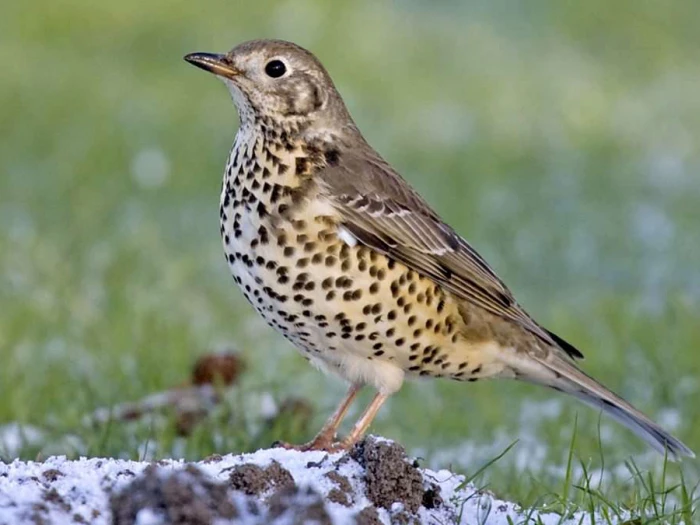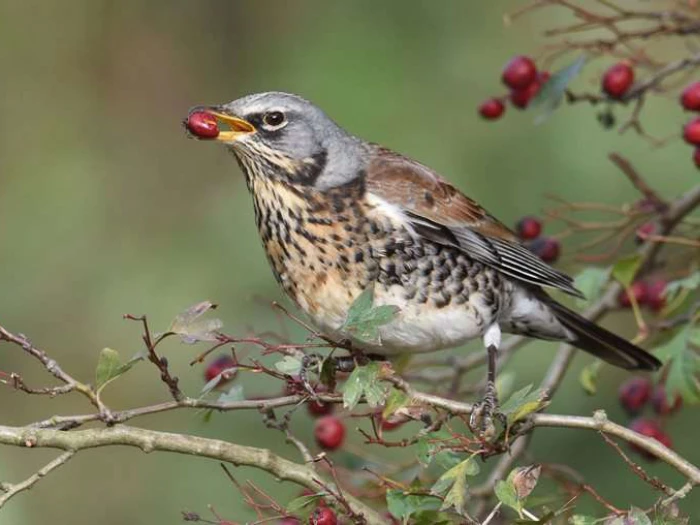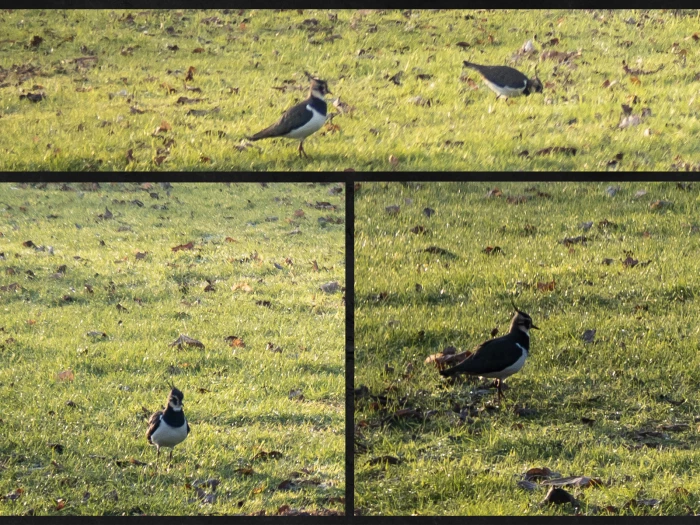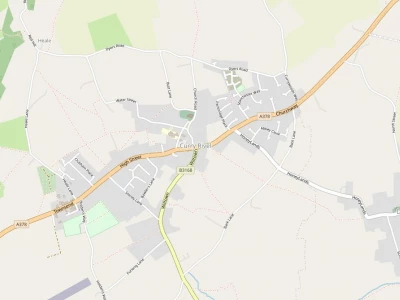Nature and Wildlife
Spring Song?
from our Nature and Wildlife correspondent, Sally Worby
Winter brings visiting thrush species driven to milder climates by harsh winters in Eastern Europe. Thrushes are medium sized passerines (perching birds) and in January flocks of fieldfares and redwings are evident on arable fields or larger gardens feeding on invertebrates in the damp soil and berries in the hedgerows.
High in trees where balls of mistletoe are seen, rattling calls reveal mistle thrushes defending their winter food. Also known as storm cock because they will sing from high in a tree in stormy weather, they feed on mistletoe berries and spread the seeds by wiping their beaks on tree bark after feeding.
The much smaller song thrush eats worms, snails and fruit and it is our blackbirds that are responsible for throwing mulch off borders or scattering neat piles of dead leaves in search of worms, slugs and other invertebrates. Despite their untidiness they are gardeners' friends.
Leaving hedgerows uncut until late winter can benefit all thrush species and apples cut and thrown onto the lawn can save their lives when the ground is frozen.
The complex mixture of mimicry typical of song thrushes and the rich melodic notes of blackbirds' spring songs are a joy to hear; I've noted blackbirds singing already! Try YouTube for examples.
Bird song is often territorial, telling others of the same species to keep away. Male blackbirds with their black livery and bright yellow bills and eye rings are also not averse to aerial battles when territory is limited. Nest sites are often at a premium, with dense hedges preferred for protecting chicks from predators.
Sally operates the Graceful Badger Forest School in Drayton Woods with Wilderwoods and Central Somerset Outdoor Learning Partnership. For more information click here
Note from Ed; Spotted in our garden for the first time a few weeks ago, a small group of Lapwings. Not the greatest of photos, but I was surprised to see the birds rootling amongst the grass and leaves and took them quickly through the window, not wishing to scare them off. Apparently one of the highest known winter concentrations of lapwings is found on the Somerset Levels. Aren't we lucky!
Get In Touch
CurryRivelOnline is powered by our active community.
Please send us your news and views.
Email: editor@curryrivel.org.uk








